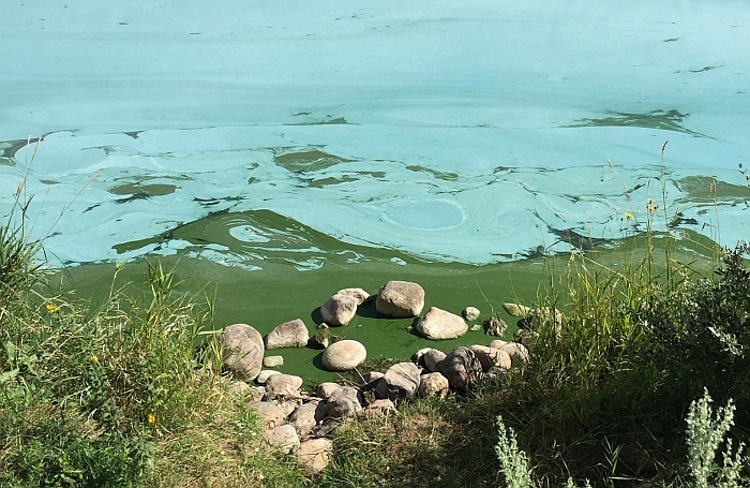While rainfall has returned to southern Saskatchewan in recent weeks, high temperatures and calm conditions have triggered a familiar summer nuisance: algae blooms at Buffalo Pound Lake.
Patrick Boyle with the Water Security Agency (WSA) says the seasonal surge in algae is expected at this time of year and has been monitored for decades. He stressed the phenomenon is natural — but not without risk.
“These algae thrive when it’s hot, dry, and calm,” Boyle said. “You’ve got nutrient-rich soils in Saskatchewan — which is why we’re good at farming — and when runoff brings those nutrients into shallow lakes like Buffalo Pound, the conditions are perfect.”
The result is often discoloured water, a musty smell, and accumulations of blue-green algae (cyanobacteria), sometimes accompanied by a bluish-gray foam.
Boyle confirmed that such blooms are “a naturally occurring thing” that’s been happening since well before settlement in the province. However, he added, “It’s best to avoid it. Even for humans, there’s risk of skin irritation, sore throat, nausea, diarrhea… But for pets and livestock, it can be much more serious if ingested.”
Buffalo Pound is among the most consistently impacted lakes in the province, due to its shallow depth and location within nutrient-rich agricultural lands. Though the WSA doesn’t track precise numbers for bloom occurrences, Boyle said this summer so far is “about average” and “not surprising” for late July.
Recent water quality data from the province’s Healthy Beaches Program supports that assessment. The July 21 sample at Buffalo Pound Provincial Park Beach recorded E. coli levels of 106.5 per 100 mL — above the recreational water quality guideline — but follow-up tests on July 23 showed levels had returned to a low 1.0 per 100 mL. Microcystin, the toxin produced by blue-green algae, remained below detection levels during both tests.
Boyle emphasized that such spikes often fluctuate quickly: “They’ll be there one day and gone the next, depending on wind and wave action. If the water’s calm and hot, they can form in hours. But they also break up fast when conditions shift.”
Public beaches are monitored and tested by the Ministry of Health and local health authorities, who issue warnings if E. coli or toxin levels pose a health concern. Boyle encouraged beachgoers to check for advisories and to use common sense: “If the water looks or smells weird, don’t go in.”
He added that the WSA works closely with the Buffalo Pound Water Treatment Plant to ensure any impacts on drinking water are mitigated.
“With the upgrades they’ve been doing, we’re confident in the steps being taken to manage that risk,” he added.
As Saskatchewan enters what is typically its hottest, driest month, residents are reminded to use caution and keep pets away from suspicious water conditions.
“You never realize how much you miss the sun until it’s gone,” Boyle noted. “But when it’s back, just keep an eye on what’s in the water with you.”
